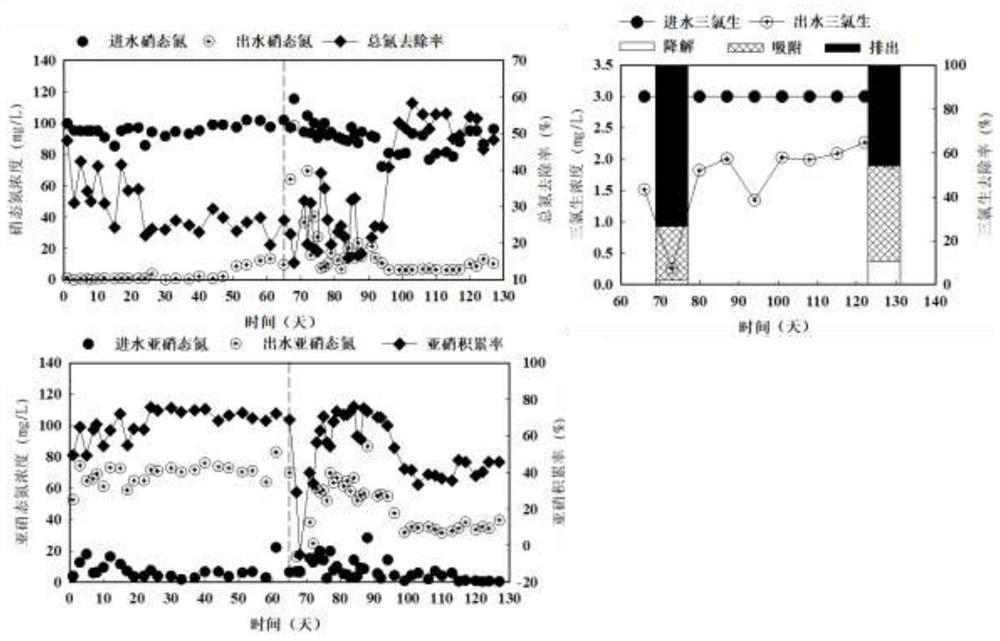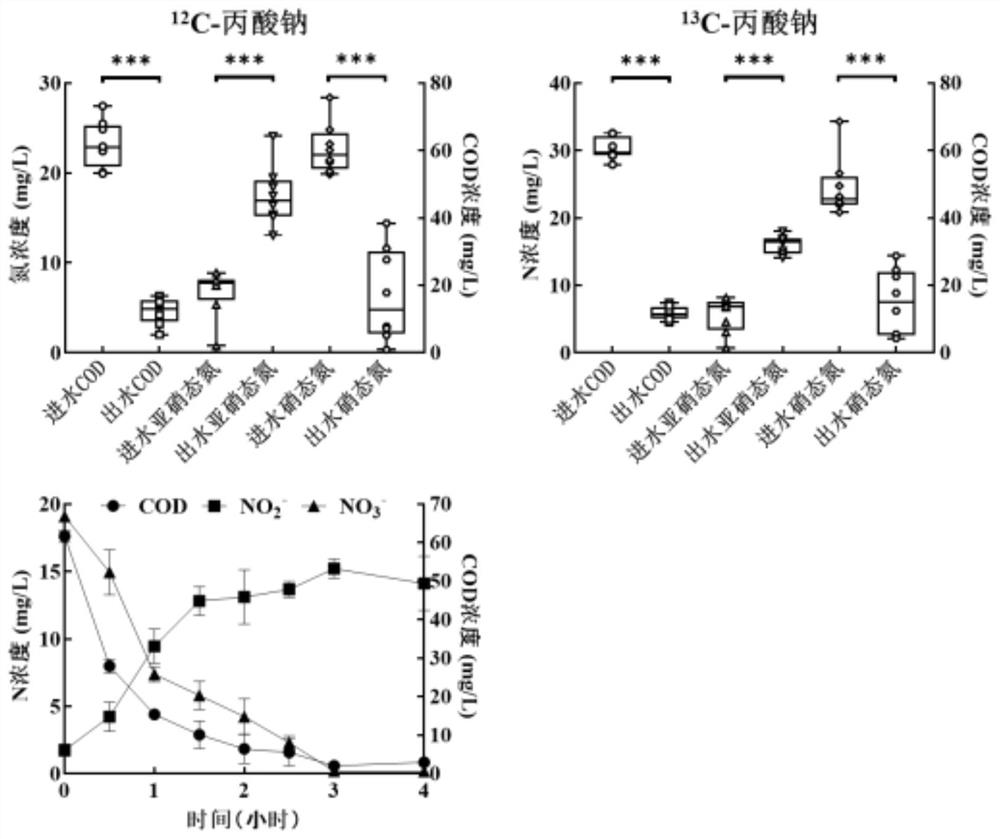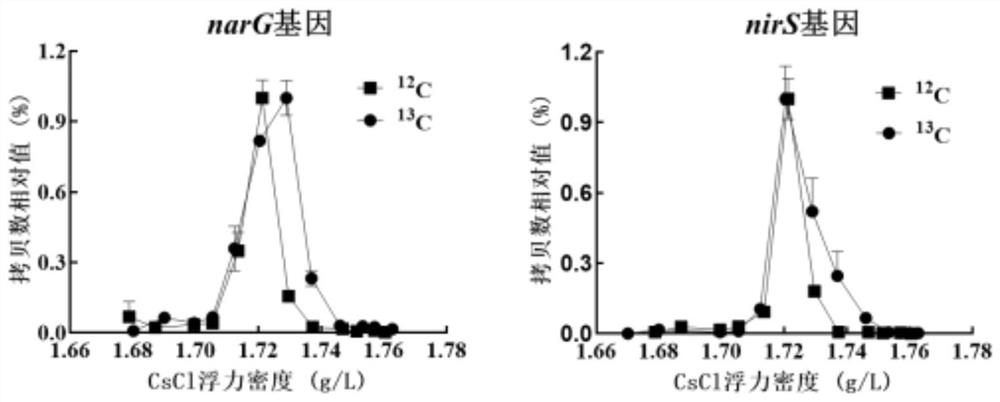A method for simultaneous identification of short-range denitrifying bacteria and triclosan-degrading bacteria based on DNA stable isotope nucleic acid probe technology
A stable isotope and nucleic acid probe technology, applied in the field of active short-range denitrifying bacteria and triclosan-degrading bacteria, can solve problems such as unclear relationships, and achieve the effect of improving identification rate and distribution ratio
- Summary
- Abstract
- Description
- Claims
- Application Information
AI Technical Summary
Problems solved by technology
Method used
Image
Examples
Embodiment 1
[0033] A method for simultaneously identifying short-range denitrifying bacteria and triclosan degrading bacteria based on DNA stable isotope nucleic acid probe technology, specifically comprising the following steps:
[0034] (1) Start-up of a short-range denitrification system based on granular sludge and biological removal of triclosan in the system. Set the influent sodium propionate and nitrate nitrogen concentrations to 315mg / L and 105mg / L, respectively, inoculate aerobic granular sludge, the sludge concentration is 6000mg / L, and start a short-range denitrification sequencing batch biological with an effective volume of 3L. The reactor achieved a stable nitrous accumulation rate after 65 days of operation, and then added 3 mg / L triclosan to the system for a total of 130 days of operation. ) Take the mud to carry out the triclosan mass conservation experiment to explore the removal of triclosan in the short-range denitrification system. The quality conservation results of...
Embodiment 2
[0046] A method for simultaneously identifying short-range denitrifying bacteria and triclosan degrading bacteria based on DNA stable isotope nucleic acid probe technology, the specific steps are basically the same as those in Example 1, the difference is: C in steps (1) and (2) Sodium was changed to the corresponding sodium acetate.
Embodiment 3
[0048] A method for simultaneously identifying short-range denitrifying bacteria and triclosan-degrading bacteria based on DNA stable isotope nucleic acid probe technology, the specific steps are basically the same as those in Example 1, the difference is: in steps (1) and (2) Sodium propionate was changed to the corresponding methanol.
PUM
| Property | Measurement | Unit |
|---|---|---|
| refractive index | aaaaa | aaaaa |
| reflectance | aaaaa | aaaaa |
Abstract
Description
Claims
Application Information
 Login to View More
Login to View More - R&D
- Intellectual Property
- Life Sciences
- Materials
- Tech Scout
- Unparalleled Data Quality
- Higher Quality Content
- 60% Fewer Hallucinations
Browse by: Latest US Patents, China's latest patents, Technical Efficacy Thesaurus, Application Domain, Technology Topic, Popular Technical Reports.
© 2025 PatSnap. All rights reserved.Legal|Privacy policy|Modern Slavery Act Transparency Statement|Sitemap|About US| Contact US: help@patsnap.com



